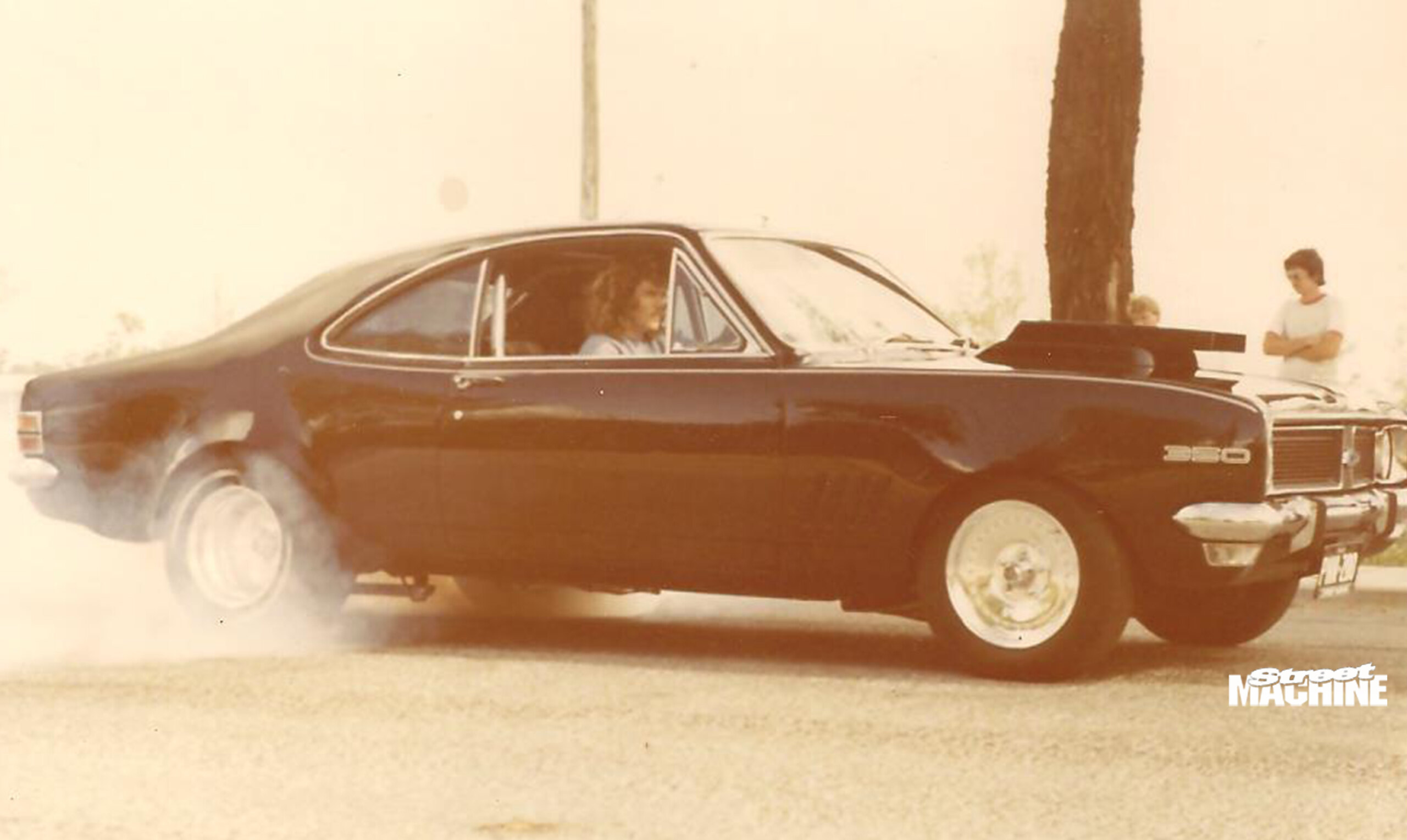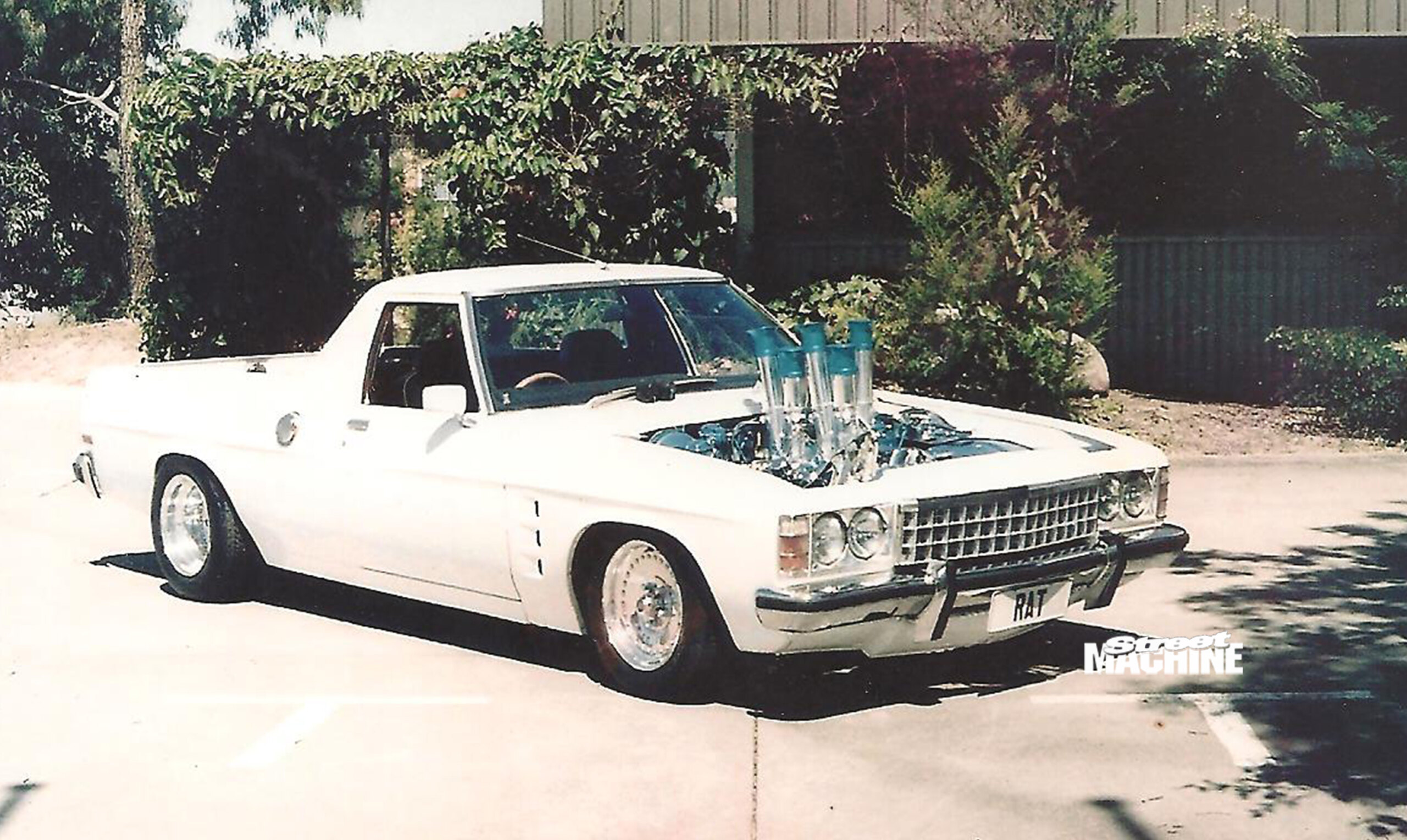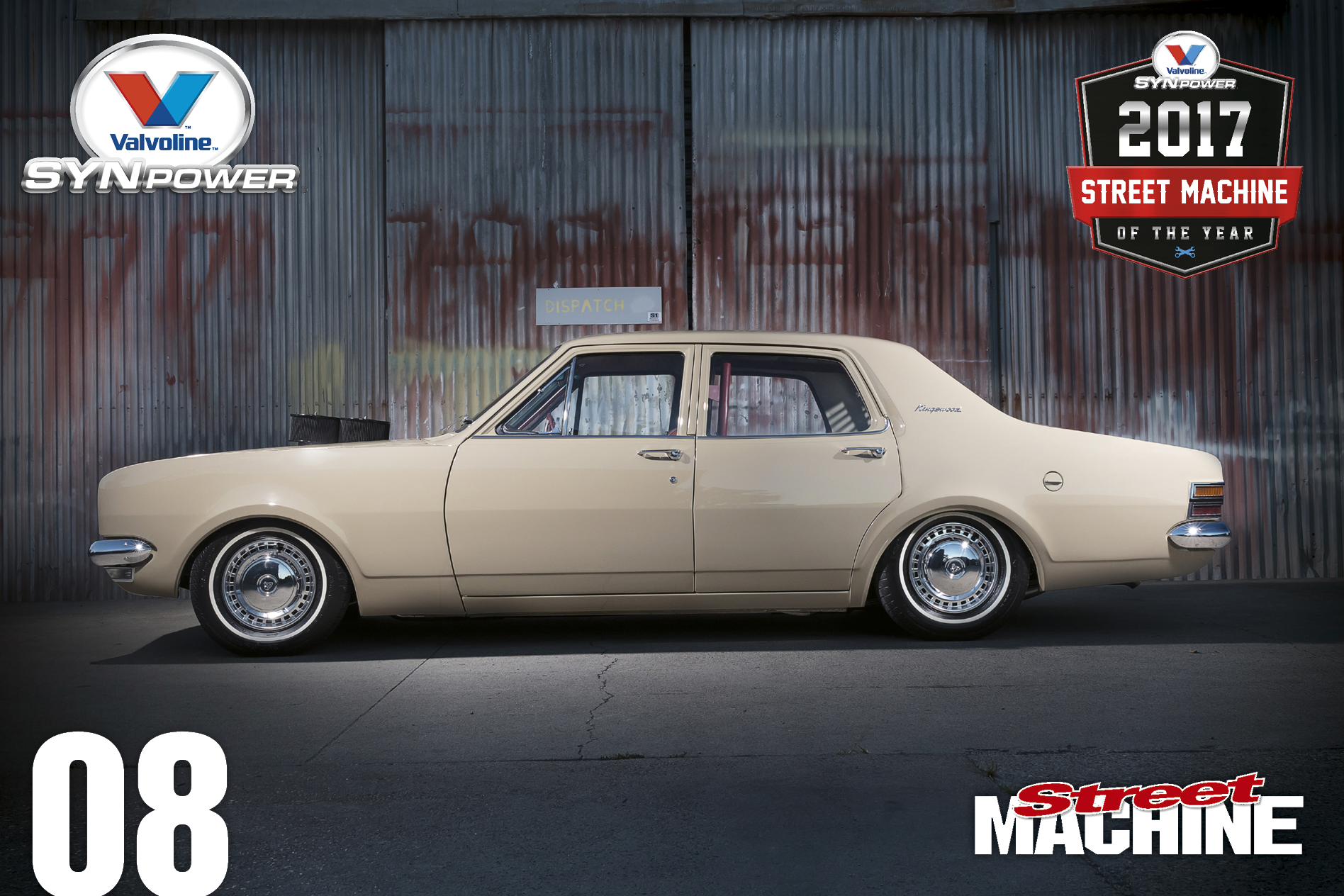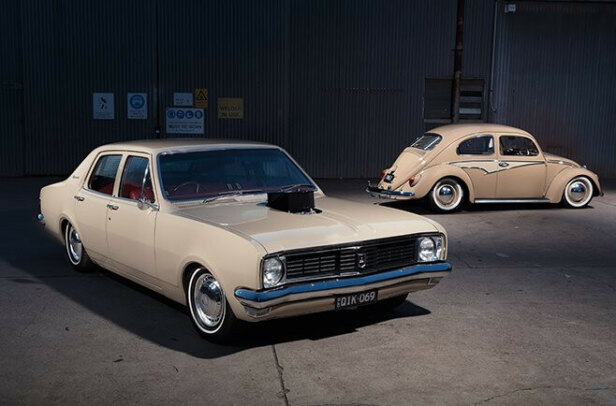Widely regarded as a founding father of Australia’s pro street movement, Wayne Pagel shook the foundations of our sport with a legendary HT Monaro. Three decades on, his passion for tough, high-quality builds is as strong as ever
This article on Wayne Pagel was originally published in the June 2017 issue of Street Machine
IN THE mid-1980s, a group of Brisbane-based mates turned Australia’s street machining scene on its ear. The names Wayne Pagel, Rob Beauchamp and Greg Carlson will trigger memories for many old-schoolers, and their respective builds have long been entrenched as icons in our history books. Wayne’s famed black HT Monaro, which we featured way back in the June 1986 issue, was officially dubbed Midnight Maniac, but has since become universally known and remembered by what was on its number plates: GAS69.
With a second generation of Pagel HTs featured in our June issue – son Reece’s sedan – we spoke to Wayne about those formative years of the pro street scene and how the modified car movement has evolved in the past three decades.
What first got you interested in cars?
I was a product of the panel van era. At 18 I kicked off with an HG van that was a dead-stocker running a six-cylinder. Originally it was more about cruising around and catching up with your mates, but eventually I fitted a 350 and tinkered with it inside and out. You know, all the bad taste stuff of that time, like decking out the rear and fitting all the add-ons to make it stand out. But then I got interested in the horsepower side of cars and making it quicker, so all the silly things fell off [laughs]. It was extra weight I didn’t need.
Was there any particular car that you obsessed over or inspired you?
Leon Harris and his XB panel van Mr Damage took detail to a new level and so did Stephen Ellis with his Holden van XX308 – those cars were both show and go, which was rare in the van scene – but it was Rob Beauchamp who taught me about the importance of quality and I probably caught that bug off him.

How did GAS69 come about, and what inspired you to go down the pro street path?
I was drag racing my van, which was basically just a box with a tough engine, and starting to learn about the whole power-to-weight thing, so knew I had to change things up. I was keen to buy a sedan-type car, so I bought a black HT Monaro from Rob Beauchamp as a roller for $3500. That was a lot of coin for something with no engine or ’box back in the mid-80s, but it was already a show-quality car. Rob was building his LX Torana at the time so he kept the driveline for that; I repainted it Midnight Black with candy blue for the engine bay before slotting in my 350 and heading to the 1985 Street Machine Nationals.
The problem was people just walked straight past it, which can be tough to swallow when it’s your pride and joy. Sure, it was a good-looking car, but there were probably six other Monaros there that looked just like it, so it didn’t stand out. I made an instant decision at those Nationals to make it tough and mean for the following year.

Well that decision paid off!
Definitely [laughs]. It won Entrants’ Choice and Top Street Comp in ’86. The pro street style was in its infancy and the rebuild was inspired by a tubbed HK Monaro drag car called No Name that was owned by a bloke called Garry Erickson. I always chatted to him about his HK and loved that race look. It was the ultimate style as far as I was concerned and definitely would make the HT stand out, so it was a win-win. An engineering shop did the tubs and chassis work but it came back jacked up in the rear and looking all gangly, which was the opposite of what I wanted – I wanted a low and fat Monaro.
A friend introduced me to a fabricator by the name of Scott Leo, who understood where I was coming from and told me he could get the ride height down. Scott worked with me all the way from that point, and he along with a band of mates helped me get it done. I was into heavy metal then and the original Midnight Maniac name came from a song by a band called Krokus; that and because we fired it up for the first time at midnight in the yard of my parents’ farm! You could hear it for miles [laughs].

I was a teenager then and my schoolmates and I pored over GAS69 in the June ’86 SM. The rims blew us away – they were the first Weld wheels we’d ever seen. How did you go sourcing cutting-edge parts like that for the build?
For starters, a drag-inspired build meant you were now dealing with race shops and not your more common local ‘street’ performance store, which gave us fewer options to find certain parts. I was seeing plenty of great stuff in US magazines too, so had Phil Woodbridge import those wheels for me. The Enderle injection on the blown 350 also came from the States, and that was a learning curve to detune it sufficiently for street use. There was some trial and error to make the whole package work when you started to mix street and race influences.




Are you surprised by how much attention and love GAS69 still has with people, and do you get sick of people like me always asking you about it?
For many years I thought GAS69 was just ‘my’ memory and something that came and went in my history of car ownership. It wasn’t until I was introduced to the likes of Facebook and other social media that it opened up a whole world of people who still remember it so fondly after so long; I had no idea it inspired people the way it did.
The strangest part is when people say: “Are you ‘that’ Wayne Pagel who built GAS69?” But I mean strange in a good way; it’s nice to know the car made such a positive impact. It even made it onto a T-shirt once, which was pretty humbling – although it would have been nice to have actually been given one [laughs].

Did you, Rob and Greg see yourselves as pioneers, or did friendly rivalry push you to outdo each other?
We were just a bunch of guys who appreciated what we could get away with it at the time. Knowing super-talented guys like Rob and Greg got everyone motivated and we’d all pitch in to help each other out – can you picture GAS69 being built next to Greg’s Blown Silly WB ute? Working on cars was a social thing too; discussing ideas as well as actually driving them and enjoying them was a big part. Of course some of our individual ideas were semi-secretive, but that just pushed everyone else to raise the bar a little higher.
Sandy Pagel still has her quad-Weber-fed HK Premier, which was featured in SM, July/August 1992
Your wife Sandy has been front and centre with you throughout this journey and has a couple of very cool cars of her own. Having a partner that shares the passion must make life much easier.
Most definitely. She still owns her quad-Webered QIK68 HK Premier (SM, Jul-Aug ’92) and we’ve recently finished a rebuild of her late uncle’s VW Beetle, which he bought new. Sandy is an underrated talent with an excellent eye for design and detail. The quality of her Volkswagen is amazing, but being a VW some people don’t appreciate it – it doesn’t make it any less of a car, and not all Beetle builds are about patina.
We slowed things down when we started a family, paring back our involvement in the show scene and getting out of drag racing, but we used what we owned and kept cars as more of a social outlet. Not that we rested on our laurels mind you; I was involved in the builds of Bill Murfin’s Billet Monaro and Al ‘Bundy’ Lucas’s SMOTY-winning HQ, so I kept my toes in the water with those cars and also with the Queensland division of the Australian Street Machine Federation.
Is there anything you miss about those foundation years of Aussie street machining?
The cost to build a car and the value for that money. I added up the bills at the end of building GAS69 and it came to 24 grand. Finding quality tradesmen back then was easier too; don’t get me wrong, they still exist now, but are just so much harder to locate. In the early days we all had mates who knew or were great tradesmen in the automotive fields, so projects just fell into place when we worked together. There weren’t many solo builds – on our own we weren’t awesome, but put a bunch of us together and we accomplished great things.
If money, time and motivation were no object, what would Wayne Pagel build as his ultimate car?
Definitely another GAS69. I would build a new version of that Monaro using the quality of modern parts and processes. I’d of course paint it black and there’d be no mistaking its heritage – wheels, injector hat, the lot.
I’ve already had artwork done as to how it will look, which is a cleaner, crisper version of the original; the hardest part these days is finding a donor HT Monaro shell, but you never know what may be around the corner, so I will keep the fire burning on that idea just in case I get the chance to build it. I still own the plates too, so that’s a major piece of its identity taken care of.
SOME OF WAYNE’S CARS:


GAS69 MONARO
Building one of Australia’s most iconic Monaros is no mean feat amongst the dozens that have crafted since 1968, but the fact that GAS69 is still so revered years after its demise is proof of Wayne’s vision and innovation. “I sold it in the late 80s as a rolling shell,” Wayne remembers.
“It went to a bloke who stripped it down, but I think it just got pushed further down the priority list and further into the backyard before eventually being scrapped. I still have the front guards, bonnet, doors, diff, rear wheels and tyres from it, so am part of the way there in case a suitable donor comes along.”

Wayne bought the bones for GAS69 as a roller off long-time mate Rob Beauchamp, after Rob slotted its original running gear into his award-winning maroon LX sedan. “The HT was already a show-quality car, so I fitted the 350 Chev and Powerglide out of my old HG panel van to get it back on the road and drag strip. It was a neat and tidy car, but there were plenty of others around that were just like it, so I decided to make it tough and mean to make it stand out”



HOLDEN HJ UTE
A Crower-injected big-block Chev took centrestage for Wayne’s tidy HJ ute (SM, Jun ’88), which was built in a three-week thrash for Summernats. It was initially a stop-gap car while his XF Falcon pro streeter was in the build. After GAS69, Wayne started the XF build as a late-model car to take on Rob Beauchamp’s VL and Greg Carlson’s VK.
But the project got bogged down so Wayne’s famous HJ was built in a rush instead. “The HJ ute was my tow car, so after the Falcon build stalled, I fitted the big-block to the ute for Summernats,” Wayne says. “The plan was to refit that engine back into the XF, but that project was dragging on and eventually I lost interest, so we sold it off.”
XY FALCON UTE
Wayne’s XY ute was meant to be a tidy tow rig to haul around his other HT Monaro drag car, but ended up a beautifully detailed magazine cover car, nabbing the front page of Performance Street Car, Oct/Nov 1993. Gorgeous purple paint and polished Auto Drags hint at the attention to detail lavished on this build, while a tough but well-mannered 351ci Cleveland was the chosen powerplant for good streetability. “The XY ute was a great find,” Wayne remembers.
“It was in such clean, rust-free condition and a classic shape that I thought it’d make the perfect tow car for my drag car. Of course I got carried away and the painter did such a great job that it became too good to haul a trailer. It became a clean streeter and show car, and we still have it in the shed. We’re currently giving it a revamp and rebuilding the motor, so it should be back on the streets soon.”
FORD XD FAIRMONT GHIA
Wayne’s XD Fairmont Ghia was built in 1986 and ran a tough 351, C4 and 9in combo. “I bought it as a stolen and recovered wreck and pieced it back together as a tidy streeter,” Wayne says. “The XD is a nice-looking model and one of the last of the ‘muscle car’-looking Falcons with the squarer lines, so it had a certain appeal for me at the time.”
Wayne, his wife Sandy and his son Reece all have stand-out rides to their credit and work together to lighten the load for each other’s projects. “Sandy has been instrumental in getting our cars finished over the past 30 years,” Wayne says. “Reece has grown up with cars, so he has a solid grounding in what is involved to finish a project. He has worked his arse off at two full-time jobs and extra part-time jobs to achieve what he has for a bloke his age. I couldn’t be prouder of the pair of them”




Comments